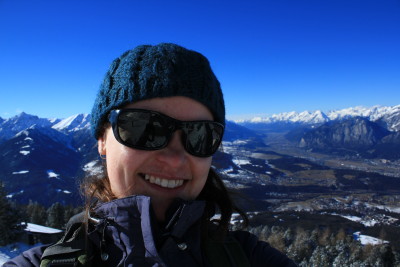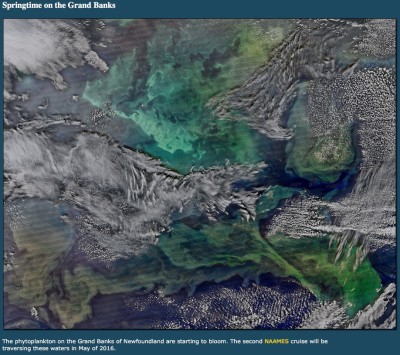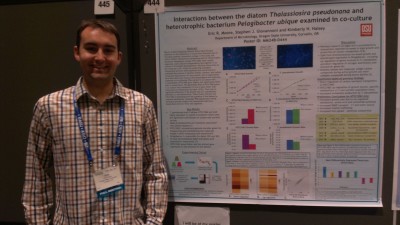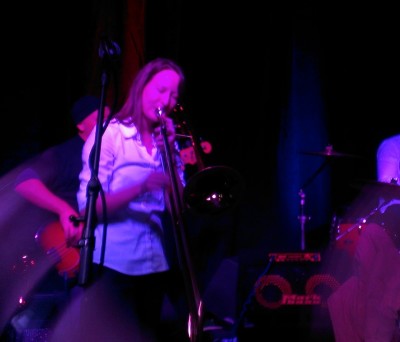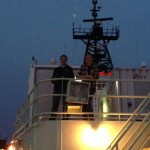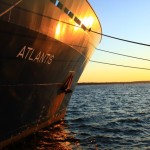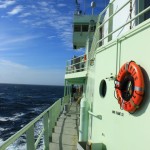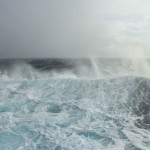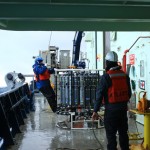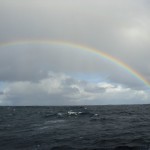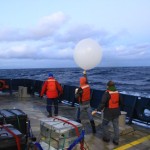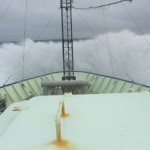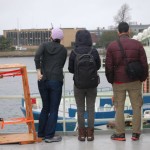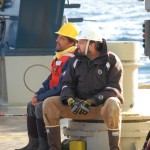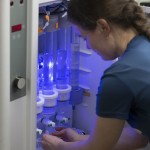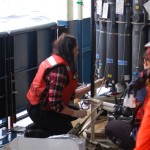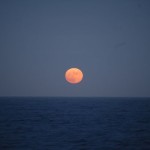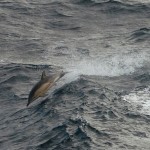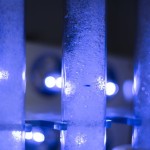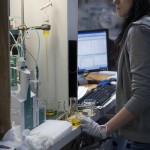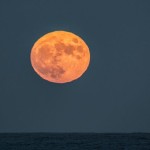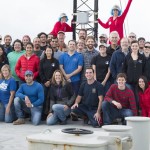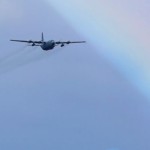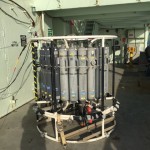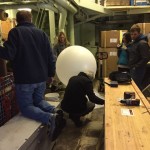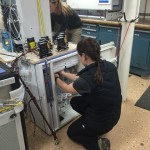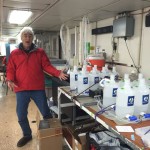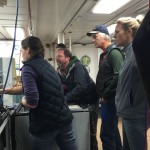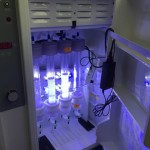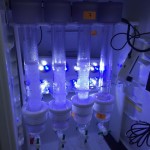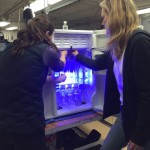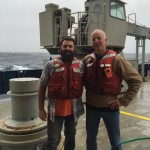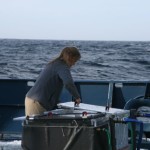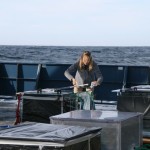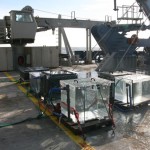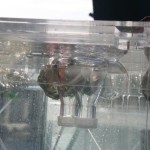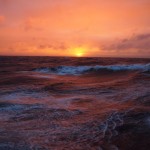Eric Moore was awarded the Middlekauf Graduate Achievement Award in Microbiology! He has made some exciting progress and discoveries that I hope we can announce soon…stay tuned!
Page 3 of 4
Our newest paper on photosynthetic energy use was accepted yesterday in Photosynthesis Research. Former graduate student Nerissa Fisher (MS 2015) discovered that under very low light availability, diatoms shift their metabolism in favor of very short ATP generating pathways that circumvent carbon intermediates. These results suggest that this type of pathway gating facilitates the remarkably high efficiencies with which diatoms convert light energy into biomass, especially in low light (Fisher and Halsey, 2016). The paper can be found here:
Mechanisms that increase the growth efficiency of diatoms in low light
A new paper from the Giovannoni lab was published this week in Nature Microbiology on the unexpected discovery that SAR11 bacteria produce methane thiol and DMS from DMSP metabolism. Our role on this paper was to measure real time production of these compounds using PTR-MS. Overall, the research described in this paper combined culturing, biochemistry, genomics, proteomics, and atmospheric chemistry to reveal the remarkable activities of this tiny, abundant, and remarkably impactful bacterium.
Sun et al. 2016_Nat_Microbiol.
In just one week Cleo and Kelsey will be boarding the R/V Atlantis for a month in the North Atlantic, coinciding with the spring phytoplankton bloom. Cleo will be operating the PTR-MS again, measuring rates of volatile organic carbon production. This will be Kelsey’s first research cruise. She will be providing technical support to several other research groups ~ an excellent opportunity for her to interact with other research scientists, particularly those interested in the dynamics of higher trophic levels, because those grazers are of special interest to her. NASA has a new video showing the view from the aircraft side of NAAMES.
Grad students Eric and Kelsey just returned from the Ocean Science meeting held in New Orleans. They presented posters on their work, attended dozens of talks, participated in scientific socials, toured research vessels, ate heartily, and even performed on-stage (Kelsey on the trombone, below). These two took full advantage of this scientific conference by being prepared and enthusiastic young scientists.
Four undergraduates are currently working in the lab on various projects. It is typical that undergrad researchers are paired with a graduate student or post-doc to carry out research projects. The dedication that all four of these undergrads have put into these projects is commendable, and will almost certainly result in authorship in upcoming manuscripts.
Bethany Moua has been completing experiments for her Honors thesis project that she will present Spring term.
Briana Bullington has worked in the lab for over a year – students that can commit to a longer stay in the lab become heavily engaged in their projects, and, like Briana, can make significant research contributions.
Duncan Ocel is a Botany major conducting his own project on Synechococcus. I am confident that his self-motivation and curiosity will yield new, exciting results.
Beckie Wyse is part of the STEM leaders program. She is a freshman at OSU, and is “learning the ropes” in the lab, providing key support in media preparation and culture maintenance.
Thanks to my amazing nephew, Nick Halsey, I have published this website using WordPress and Nick’s tutorials available at Annenbergdl.org. I can’t wait to see where the multiple talents of this young man take him.
The first NAAMES (the North Atlantic Aerosols and Marine Ecosystems Study) cruise was an amazing adventure! We spent the month of November collecting data along side 30 other scientists that are part of this large interdisciplinary effort to understand annual phytoplankton bloom events and their impacts on climate. Our roles on this project are (1) measure depth-resolved primary production, and (2) measure volatile organic carbon cycling by plankton. The photos here were taken by many of our talented colleagues (thank you all)!
